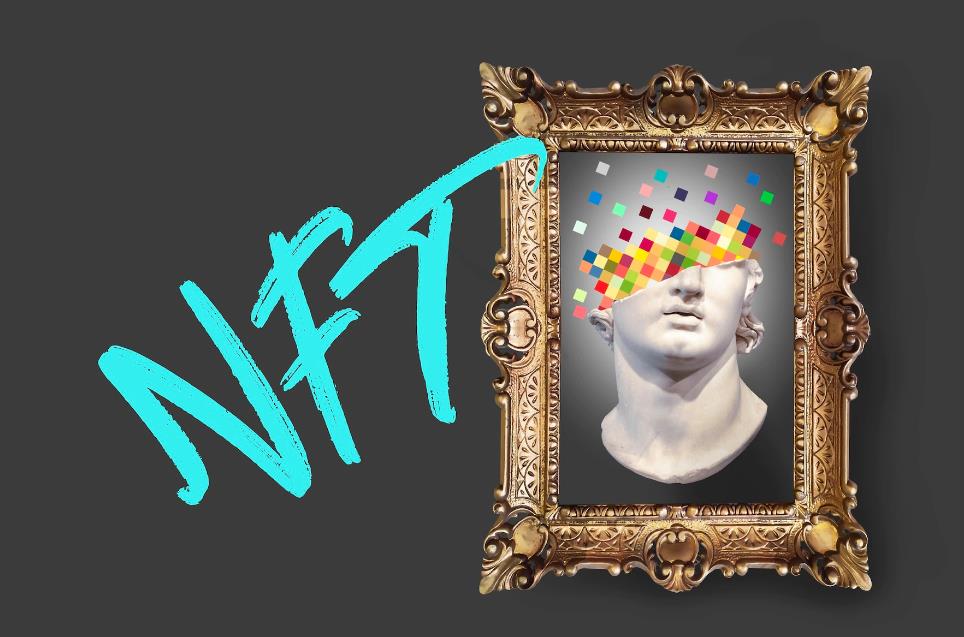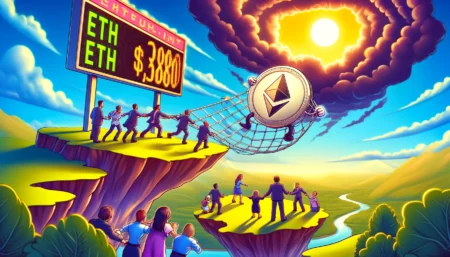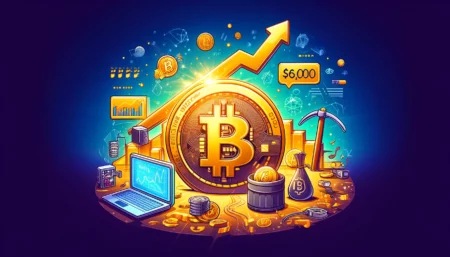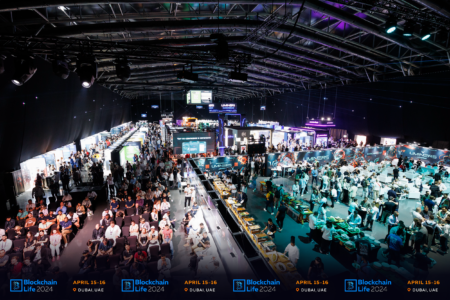After saying goodbye to the explosive growth of 2021, the NFT market ushered in a very different 2022-NFT developed rapidly in the first few months, and then plummeted together with cryptocurrencies, and even the speculative frenzy ended.
Next, we will review together to see what happened in the NFT field in 2022.
Bud Light and Nouns Dao Showcase NFT at the Super Bowl
Brands are flocking to the NFT space, but Bud Light plays it differently. Bud Light, the beer brand of Anheuser-Busch, the largest beer brewing company in the United States, has reached a cooperation with the decentralized organization Nouns DAO.
As part of the partnership, Nouns DAO presented Bud Light NEXT with a valuable Nouns NFT, and in return, Bud Light featured “Noun glasses” in its Super Bowl commercial.
With the help of Web3 consulting firm Vayner3, Bud Light also launched a limited-edition can containing elements of “Noun glasses” and let NFT holders (Bud Light has its own NFT project Bud Light N3XT) vote on its behalf in the Nouns DAO.
Record CryptoPunks Sales
Earlier this year, the NFT market was still surging. Although not as crazy as March 2021 (when an NFT work by digital artist Beeple sold for $69.3 million at Christie’s), the nearly $24 million sale of CryptoPunks Ethereum ETH -2.34% NFT in February is surprising enough.
Deepak Thapliyal, founder and CEO of Web3 startup Chain, bought CryptoPunks for 8,000 ETH, doubling the sale price record for an Ethereum PFP project.
In November, after FTX collapsed, he tweeted that he was open to selling NFTs, but Thapliyal ultimately decided to keep Punk.
Pixelmon Went Wrong
The Pixelmon project contains 10,005 pixelated character NFTs and launches on February 7, 2022. Before the official debut of NFT, the project party made a lot of publicity around the collection value and future development, which also made buyers have high expectations for the project.
The 8,079 NFTs in the first-level sale were sold out within an hour of the project launch, and the Pixelmon team has received 23,055 ETH (over $70 million) so far.
However, when the artworks were finally revealed to the community on February 16, collectors felt cheated. Because these works look very amateurish, like poor imitations of Pokémon.
Then came the scandal of the founder misappropriating project funds, and the base price of Pixelmon plummeted. Currently, the new team is trying to make a proper game around the project.
BAYC Team Acquires CryptoPunks
Yuga Labs, the publisher of Boring Ape (BAYC), announced that it has acquired the IP of the CryptoPunks and Meebits NFT series from Larva Labs.
So far, the top two NFT projects by market value in the world are owned by Yuga Labs, after some Punk NFT holders expressed dissatisfaction with the way Larva handled the project.
In recent months, Yuga Labs has granted CryptoPunks and Meebits owners intellectual property commercialization rights, allowing them to create works and products based on NFTs like Boring Ape owners.
At the same time, Yuga Labs is also committed to creating the artistic value of CryptoPunks. In March, Yuga Labs completed a financing of US$450 million at a valuation of US$4 billion.
Boring Ape Launches Native Token
In March of this year, BAYC announced the launch of the ApeCoin (APE) token. ApeCoin is an Ethereum-based token built for Metaverse applications.
Holders of Boring Ape and Mutant Ape have the right to claim tokens. So owners of these NFTs are arguably making a killing — owners of the Boring Ape NFT can get around $80,000 worth of tokens on day one.
The price of ApeCoin has fallen by about 85% since its launch, but NFT holders who cashed out in time still got rich returns.
Axie Infinity Hacked in Recession
Axie Infinity, the largest NFT project in 2021, encountered development setbacks at the beginning of 2022: serious loss of users, and a sharp drop in NFT and token prices. To add insult to injury, Axie Infinity’s Ronin sidechain was hacked in March for an estimated $622 million worth of cryptocurrency.
The reason why the Ronin sidechain was hacked was that its own decentralization was not enough, and hackers could send fraudulent transaction information to Ethereum through the bridge.
Subsequently, the U.S. government identified the initiator of the hacking as the North Korean group “Lazarus Group”. Axie Infinity developer Sky Mavis has raised $150 million in new funding to compensate affected users. So far, about 10% of the stolen funds have been recovered.
Moonbirds Take Off
When the NFT market was still very hot, another new player entered the game. Proof is a Web3 startup co-founded by venture capitalist Kevin Rose and artist Justin Mezzell.
Proof launched NFT access passes to an exclusive community of collectors in late 2021, followed by a massive airdrop of the Moonbirds NFT collection in April 2022. In just two days, Moonbirds’ NFT sales reached approximately $280 million.
Additionally, Reddit co-founder Alexis Ohanian has joined as an investor. Despite some of Proof’s controversial moves (the company opened up the rights to commercialize Moonbirds’ intellectual property to anyone in August), it remains one of the hottest startups on Web3.
Yuga Labs Launches Metaverse Platform Otherside
Yuga Labs will soon launch virtual title deeds for its upcoming Otherside metaverse game, from which Boring Ape NFT holders will be able to obtain valuable crypto assets for free.
Given the success of Yuga Labs’ NFT series, the Otherside project caused a stir, and the price of Boring Ape skyrocketed before that.
In the first few days, the transaction volume of Otherside virtual land Otherdeed NFT exceeded $900 million, and in the process set a single-day transaction record for OpenSea.
Subsequently, Yuga Labs was criticized due to poor design and suspicion of raising Ethereum gas fees. Ultimately, Yuga Labs refunded some of the fees but ignored user complaints.
The NFT speculative bubble is starting to burst
With the advent of the encryption winter and macroeconomic turmoil, the NFT market has cooled down rapidly. The specific performance is a sharp decline in transaction volume. Compared with January, the monthly transaction volume in November has dropped by 88%. Of course, the number of NFTs sold has also decreased significantly.
Also, prices for top collectibles have plummeted, with Boring Ape’s minimum asking price falling from $429,000 in late April to just under $60,000 in November. While the market still trades more than $500 million a month, with occasional high-priced individual NFT transactions, the craze has faded.
Minecraft Announces NFT Ban
In July, Minecraft developer Mojang updated its usage guidelines, announcing a ban on the use of blockchain technology, including NFTs.
According to the official usage guidelines, users are not allowed to use blockchain technology in game client and server programs, nor to create game-related NFT content. Mojang stated that they are concerned that NFT products will create rare items, which is not in line with the spirit of the “Minecraft” game.
The move immediately took aim at Polygon MATIC -2.62%-based fan project NFT Worlds, which aims to create a Minecraft server out of player-owned NFT plots. In the end, NFT Worlds chose to start all over again and create similar games themselves. Another well-known game studio, Rockstar Games, recently stated that it will ban the use of NFTs on the Grand Theft Auto V server.
Twitter Scams Are Rampant
Scams are rife on social platforms in 2022, fueled by the NFT speculative trend and FOMO culture (Fear of Missing Out, an internet buzzword referring to the fear of missing out on what’s happening in your circle of friends). We see accounts hacked, scam links spread, user NFTs stolen all the time on Discord and Instagram, but nowhere more so than on Twitter.
Earlier this year, attackers took accounts of authenticated users, such as journalists, and renamed them to share scam links about projects like Otherside and Azuki.
They then went on to hack the accounts of creators of well-known projects such as Beeple, Noons, and Limit Break. While companies like MetaMask and OpenSea are working hard to fight back, such bad behavior continues to proliferate.
Solana SOL -5.12%’s Market Cap Plummets
Over the past year, Solana has lost more than $40 billion in market value. Affected by the collapse of FTX, Solana fell into a development dilemma, with fewer developers and users, and the activity of the entire ecosystem dropped significantly.
At the end of December, Solana NFT projects DeGods and y00ts announced that they would migrate to Ethereum (first quarter of 2023) and Polygon blockchain respectively, and the departure of NFT projects will undoubtedly make Solana’s situation worse.
Expanded Use of Bored Ape Ip
In addition to price fluctuations and free airdrops, we also need to pay attention to the other side of the Boring Ape NFT. Another narrative continues as holders put their Boring Ape NFTs to use to fuel art, projects, and more.
The concept of a decentralized IP will really catch on in 2022, thanks to the success of things like Snoop Dogg and Eminem’s music videos and MTV VMA performances, as well as the launch of Boring Ape-themed restaurants and beverage brands. Relevant activities are still launched regularly, but the specific development in the future depends on the market conditions in 23 years.
Ethereum Merger Reshapes NFT Narrative
In terms of market impact, the Ethereum merger appears to be a bit anticlimactic. But the move to a proof-of-stake (PoS) verification system after the merger undoubtedly means that Ethereum will be more environmentally friendly. Its energy consumption will be reduced by 99.5%, which is enough to silence those who clamor that NFTs are harmful to the environment. Previously, most opponents questioned the environmental impact of NFT.
Another benefit of switching to a PoS system is that it lowers the entry barrier for participating in Ethereum staking. Crypto mining previously required users to own and operate expensive and cumbersome equipment, but with the new version of Ethereum, a dedicated laptop is all that is needed to do the job. Increasing the number of verifiers in Ethereum also contributes to the decentralization of the network. Overall, the ethereum merger is likely to attract more creators and brands to join.
Big Brands Choose to Launch NFTs on Polygon
In 2022, the Polygon blockchain network is often the first choice for mainstream brands to enter Web3. This network of Ethereum sidechains has successfully helped brands such as Starbucks, Meta, Nike, Reddit, and Disney build projects or platforms.
Their collective influence is enormous. These traditional big names contribute to the mainstream adoption of Web3 and NFTs. In October, a Reddit executive said that more than 3 million users had created Polygon wallets to create collectible avatar NFTs. And Starbucks’ NFT rewards platform and Meta’s Instagram NFT have further pushed NFTs into the mass market.
Creator Royalties Debate Rages
One of the hottest topics in the NFT space over the past few months has been creator royalties. Royalties on digital artwork refer to the fees paid by platforms to digital artists or creators in secondary sales—the amount is usually 5% to 10% of the secondary sales.
Many people think that creators’ royalties are an important embodiment of the core of Web3, and are regarded by many as a key aspect of Web3, ensuring the rights and interests of creators and builders, and encouraging them to continue to create, and their output is the cornerstone of the development of the Web3 world .
But this summer, some trading markets have implemented a zero-royalty policy to attract NFT traders, which also caused Magic Eden’s Solana NFT market share to decline rapidly. After that, Magic Eden enabled optional royalties in October, allowing NFT buyers to choose whether to pay royalties.
In November, OpenSea, the world’s largest NFT trading platform, proposed the idea of canceling royalties on existing collections, but soon encountered strong opposition from creators.
In the end, OpenSea stated that it would continue to implement royalties, and its competitor, the Ethereum NFT market X2Y2, subsequently withdrew its previously implemented optional royalty policy and announced mandatory royalties instead.
However, this story is not over yet, NFT creators are defending their rights, and new royalty standards and enforcement tools are also brewing.






